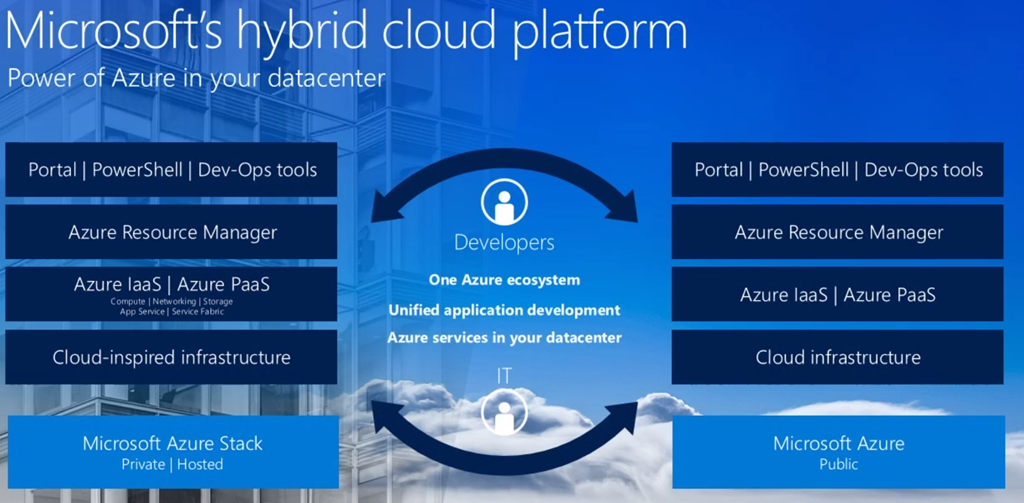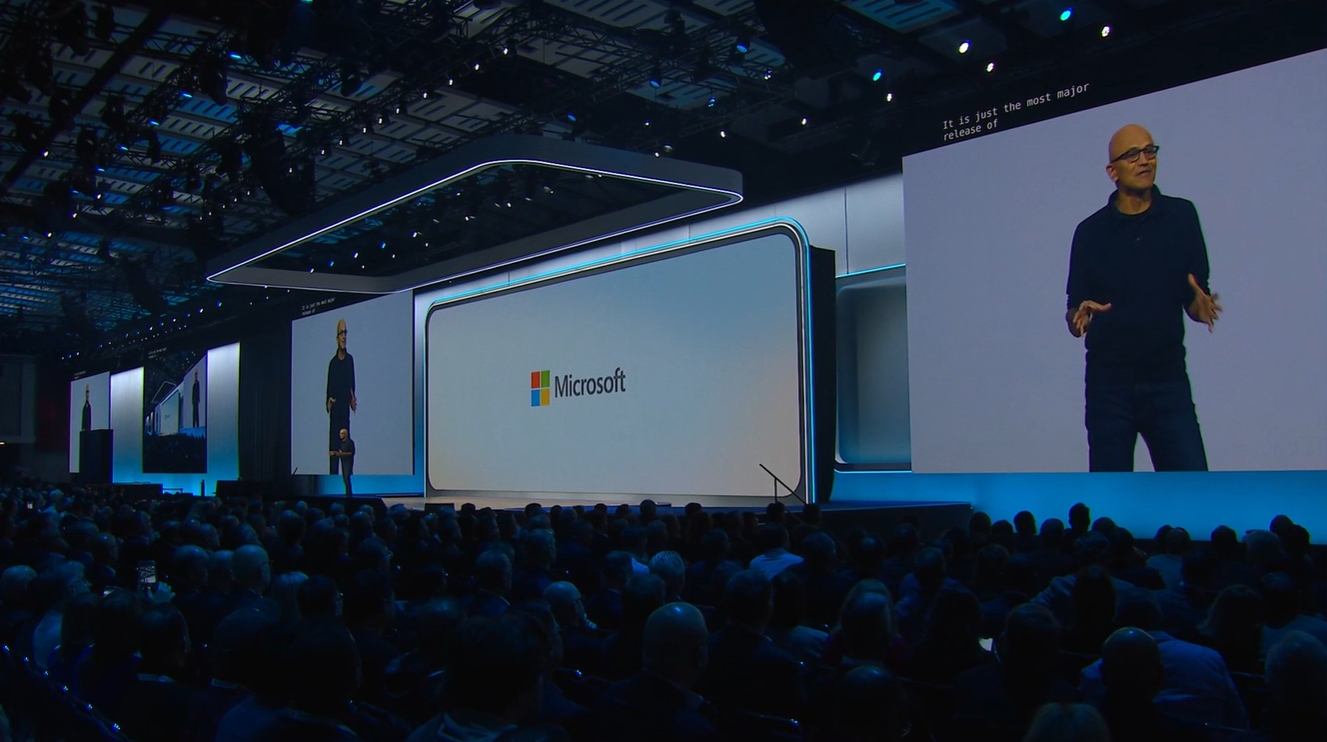
Essentially, for those businesses already invested in Azure Cloud Services; it opens the door to adopting Hybrid Cloud by using the same Azure administrative tools to run on premise services with an Azure-like experience. This isn’t just a self-service interface over the top of a virtual interface either, this is a purpose built cloud platform that enables businesses to run cloud services within their own Data Centres.
Azure stack uses the same portal, same experience, same command line, same API’s for development and runs the same services used to build new applications in the cloud. Microsoft claim is that they want to deliver a consistent experience across Public Cloud, Hosted Cloud, Private Cloud so that there are no barriers between them. Azure Stack will compete with other hybrid private cloud frameworks, such as OpenStack, Cloud Foundry and others.
While these frameworks offer paths to move applications between customer owned hardware (on premises or off) and public clouds, Azure stack is unique in the sense that applications can be written once for Azure Stack and then run in Microsoft’s Azure public cloud with no changes or special considerations.
The Azure Stack White Paper offers additional reading on the concept and functionality that exists today, given that it has only recently launched.
Main use cases? Whilst there are many use cases; the main drivers arise where there are barriers to running applications in Azure public cloud, for example:
- Corporate Policy o Compliance
- Reliability of connectivity
- Needing to run “disconnected”
The use cases will broaden as the capability grows and functionality widens. Some planned features just are not available yet, for example an Azure Stack deployment only supports a single scale set and a single region, though multi-region support is targeted for 2018.
It’s a very interesting move from Microsoft and one that supports their Hybrid Cloud mantra of recent time. If you need more information, drop us a line.

About the Author: Mike Starnes
Mike has worked in the IT Industry for over 20 years. If he's not talking technology, he'll be reading, playing football or trying to embarrass his daughters.
.png)


